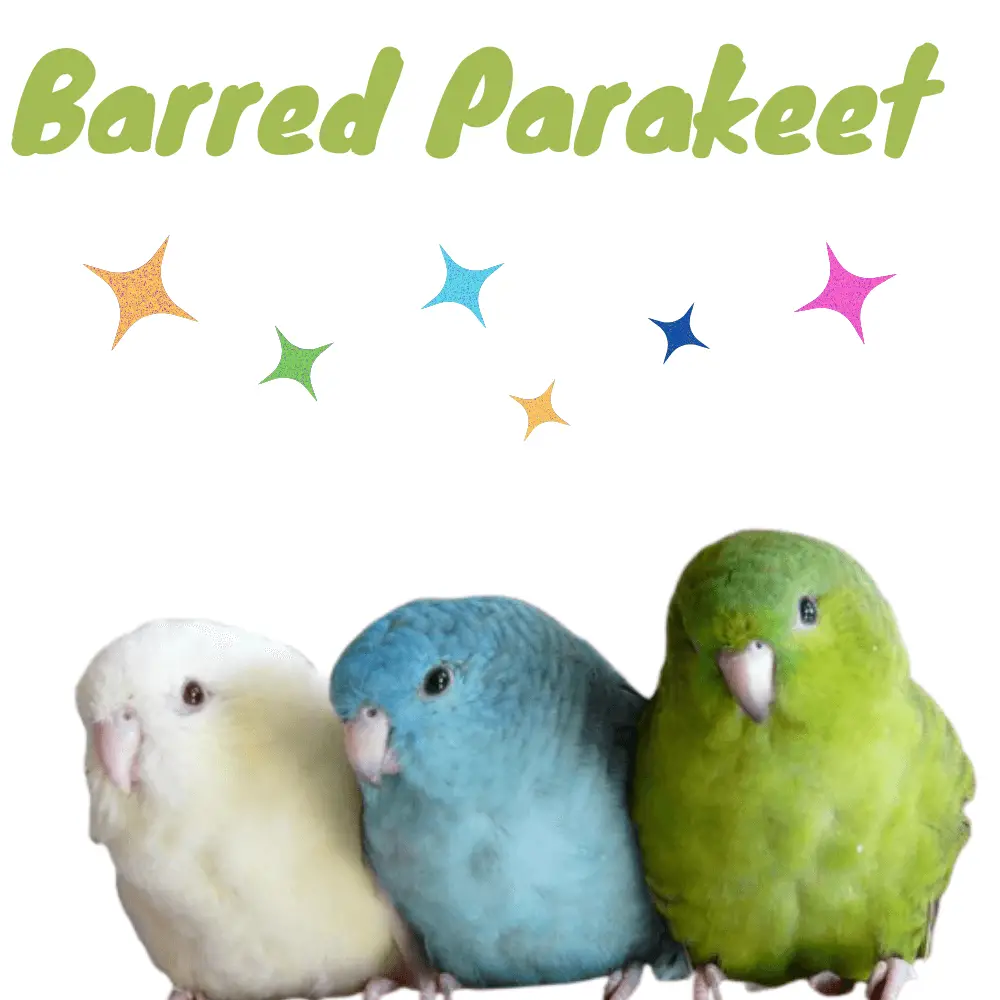
Catherine parakeet is also known as Lineolated parakeet: Everything you need to know about this little budgie!
The Lineolated parakeet or Catherine Parakeet is a very sweet and particularly curious bird that is quite easy to tame. She needs space and stimulation every day. Playful, she loves to climb and never stops doing acrobatics. It is a pet that is suitable for beginners with good care to live long in good health.
The history of Lineolated parakeet
The Lineolated parakeet is native to Latin America. It is found in the wild in Mexico, Colombia, Panama, Peru, and Venezuela. The first written description of a Catherine parakeet dates from 1853.
- Scientific Name: Bolborhynchus lineola
- Family: Psittacidae
- Height: about 17 cm
- Weight: 50 to 60 grams
- Color: dominant green lined with black
- Life expectancy: 10 to 15 years.
The physique of the Catherine parakeet
The Lineolated parakeet is a small parakeet of about 17 cm and weighs 50 to 60 grams. It is thin but all around. Its plumage is green. In nature, it allows it to easily camouflage itself in lush vegetation. A black-striped effect is observed on the lower parts of the bird.
This effect is due to the black border of the feathers. These are “lineage” feathers. Males often have more black than females. The tail is short. The legs and beak are white, cream, or light pink. The beak, like the legs, is powerful.
The Lineolated parakeet uses her claws to hold seeds and objects… The mutations gave the versions Lutino, Turquoise, blue, and olive green … Only a DNA test (or egg-laying) can sex this bird. Certain clues can help differentiate between males and females. In males, the central rectrices’ tail feathers are largely black while those of females are black only at their tips. Males are often larger with a more massive beak.
The character of the Lineolated parakeet
The Catherine parakeet is a calm and gentle bird, curious and playful. She will be suspicious at first and then as soon as she feels safe, she will play, get out of her cage, come to explore her territory, perch on your shoulder, or snuggle in your sweater.
She needs to be solicited every day so as not to get depressed. It is a bird that flies little in its natural state. The Catherine parakeet prefers to use her legs to move by climbing or walking. His acrobatics can be impressive. Very agile, it climbs just about anywhere. She spends a lot of time hanging crookedly, upside down, and she is very often moving.
When she is afraid of something, she rushes into a hiding place or dives panicked to the bottom of her cage by clapping her wings. She is extremely curious which facilitates her integration into the house. However, we must not go too fast! Patience and the passage of time are the best assets to tame a Lineolated parakeet. She will get caught easily and rarely bites if properly educated.
It is a water-loving bird. The Lineolated parakeet appreciates having a pool for swimming. You can also spray it. She has a very soft song and will greet you with chirping as soon as you get home. It looks a bit like a giggle. When she is used to getting out of her cage, she takes the opportunity to explore every corner of the room.
This is a bird that can be very close to its owner and show signs of affection. All you have to do is spend time with her every day. The Lineolated parakeet lives in small groups of individuals. She will enjoy life in captivity more if she has a mate, male or female. It can also live in aviaries with other species such as cockatiels…
The diet of the barred parakeet
The barred parakeet is an easy bird to feed and can be greedy, even voracious. It can be fed with seed mixtures for budgies. This mixture should be low in sunflower seeds. Mixtures for wavy budgies are also suitable; Canary seed must be added for extra fat intake. The various seeds are the basis of its diet: saffron, oats, buckwheat, millet, and flax …
She also appreciates sprouted seeds. They provide vitamins and are particularly recommended during molting. Sprouted seeds are easy to prepare. Simply place the usual seeds in a container of water for 24 to 48 hours, changing the water regularly.
The water is then removed and the seeds are placed in a plastic tray closed with cling film. These sprouted seeds can be mixed with hard-boiled eggs and rusks to make a kind of pâtée.
She loves fresh fruits and vegetables that need to be distributed daily. She loves cucumbers, carrots, corn, cooked beans, and peas… Cut apples, grapes, cherries, peaches, apricots, figs but also kiwis, strawberries, raspberries … are generally highly appreciated.
A cuttlefish bone is an essential dietary supplement. It provides the calcium necessary for the good health of the bird’s skeleton. Mineral blocks can provide the mineral salts necessary for general good health.
The health of barred parakeet
The barred parakeet is a rather robust bird. She fears drafts and prefers warm temperatures. By spending time with your budgie, you will quickly detect unusual behavior. It should alert you to a possible health problem.
The condition of feathers, beaks, and weight loss are also signs to watch out for. The droppings of the Lineolated parakeet are rather large compared to the size of the bird and can have a rather strong and unpleasant smell.

Like all budgies, the Lineolated parakeet can be prone to bacteria and fungi. Claws grow quickly and need to be pruned regularly. To help with claw wear, you can install a therapeutic cement perch. A bathtub must be provided in the cage. Its life expectancy is 10 to 15 years.
Lineolated parakeet Color mutations
- Lutino
- Turquoise
- Grey/Mauve
- Blue/Cobalt
The habitat of the Lineolated parakeet
The Lineolated parakeet needs a large cage that is placed in the living room. It is a curious bird that likes to observe and participate in the life of the house. Even if she prefers to climb or walk rather than fly, she must have the ability to spread her wings and fly whenever she wants.
As she loves to climb, she must have many accessories at her disposal. They will allow him to keep busy while you are away. Install swings, ropes, ladders, and anything that can allow him to climb, and hang vertically or horizontally. She likes cotton rings, big destructible toys (even if she destroys little ones), and fresh branches…

Hiding places are also necessary for the bird to feel completely safe. She needs confined spaces in which she can snuggle. As it is quiet and not very noisy, the parakeet Catherine can live very well in an apartment.
In summer, she will appreciate that her cage is outside on a balcony or terrace, sheltered from drafts and full sun. A bathtub must be made available or you can also accustom your budgie to being “sprayed”.
The reproduction of the Catherine parakeet
Sexual maturity is reached around 10 months; however, it is not recommended to mate Lineolated parakeets before they are at least 12 months old. Reproduction too early can cause problems during egg-laying. In nature, the breeding period begins in December. The nest is installed in a tree hollow. In captivity, the breeding period lasts almost all year round.
A two-compartment nesting box is a good idea. The male thus remains present in the nest without disturbing the brooding. The little ones begin their exploration with this two-piece nest box. The female lays four to seven eggs, which she incubates for 22 days. Young people can be independent for around eight weeks; They do not necessarily leave their parents.
Tips to remember! The Catherine parakeet is a perfect bird to start. She is calm, and gentle, does not make much noise, and attaches herself to a master who takes good care of her. But be careful! Bolborhynchus lineol can live about fifteen years! Adopting this bird commits you to many years, for better or for worse!




















